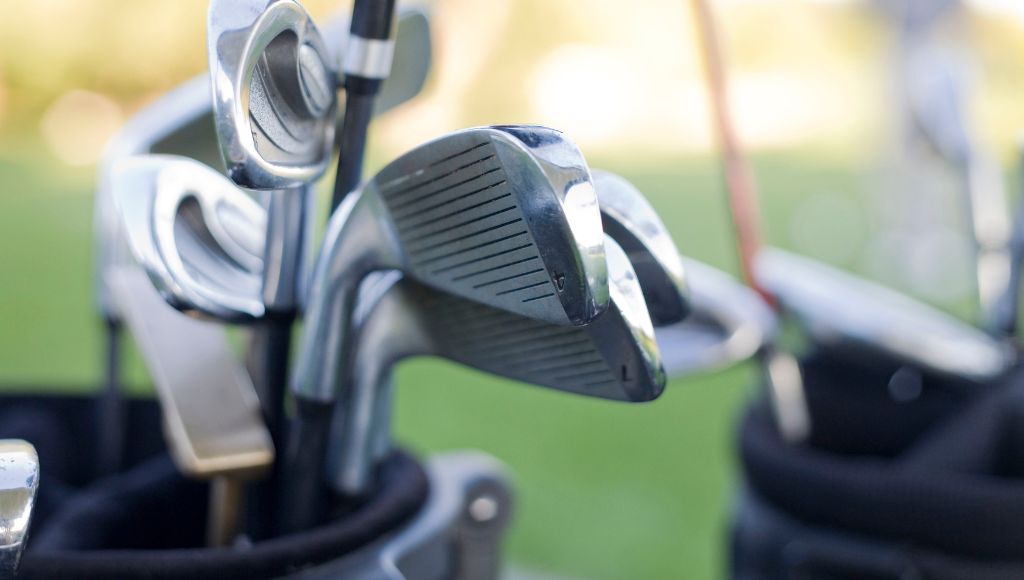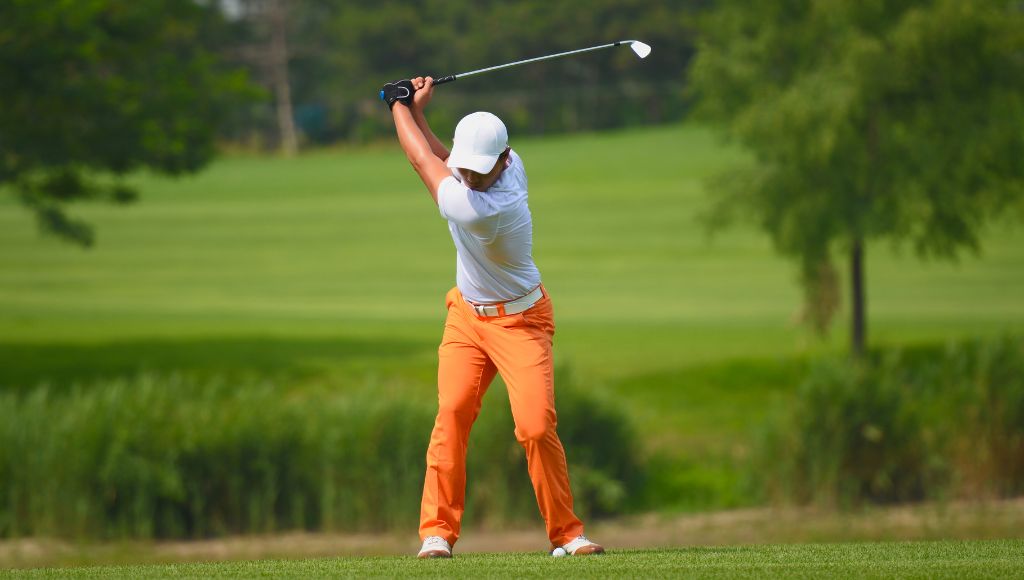If you are a golfer with shoulder arthritis you might think that this signals the end of your playing career and that your days of walking the fairways with friends are over. However, in this article, we will show you how you might still be able to continue playing golf with shoulder arthritis pain.
Shoulder injuries are common among athletes and can greatly impact one’s performance. One way to prevent shoulder injuries is to focus on maintaining proper grip strength and joint stability in the shoulder. This can be done through exercises such as shoulder rotations and grip strengthening exercises. By keeping the shoulder joints and muscles strong, the risk of injury can be reduced.
Through our extensive research, we have found the best 5 guides for playing golf with arthritis, if you follow our advice, it could help you continue playing this amazing game for years to come.
You may also enjoy:
Can you play golf with shoulder arthritis?
Arthritis is a degenerative joint disease, and osteoarthritis is one of the most common forms which affects around 9.6% of men and 18% of women worldwide. Rheumatoid arthritis also known as inflammatory arthritis is less common but still affects around 1% of the population.
These conditions both cause significant joint pain for golfers, and if it affects the shoulder it can mean that the golf shot is impacted and your range of motion will be reduced. If you play regularly on the golf course this could impact your enjoyment and performance.
However, you can still play golf with shoulder arthritis if you are prepared to make some adjustments to your game. This could mean adjusting your golf tee, adjusting your golf swing, follow through, and how you warm up the shoulder joint before teeing off. Keep reading to find out more.

Tips for playing golf with shoulder arthritis
1. Don’t carry your clubs
The average golf bag could weigh up to 30 pounds when full of clubs, balls, and accessories. If you have arthritic pain in your shoulder or shoulders the last thing you need to be doing is adding any additional stress and strain to your upper body. Our first tip is to make sure that you use a comfortable wheeled cart the next time you are playing golf.
Using your bag with a wheeled cart will take a huge weight off your shoulders, protect your joints and reduce the risk of wear and tear during your round. When you use a cart for your golf bag make sure to choose one with three wheels that can be pushed, as the pulling motion can aggravate your shoulders and joints further.
2. Warm up before you play golf
A warm-up exercise is an excellent idea for any golfer at the beginning of any game, even if they are not suffering from shoulder arthritic pain. Thoroughly warming up the joints and muscles with a 10 minutes stretching routine before you hit the ball can loosen up the body, prevent injury and allow you to have a better range of motion in your golf shot.
However, for golfers with shoulder arthritis, a simple warm-up stretch is a must every time you play. The arms and shoulders must be thoroughly loosened up before you hit your golf ball. This aids mobility and coordination. It also relaxes the tension in your muscles, torso, wrists, knees and legs.
There are some excellent warm-up, stretches and exercise routines to follow at Versus Arthritis which is a charity that supports people struggling with arthritic conditions.
One of the simplest exercises to perform is to make arm circles before you play. Hanging one of your arms down towards the ground, move it in circular motions backward and forwards up to five times on both sides.
These exercises aren’t very difficult to complete but can make a big difference to your enjoyment of the game meaning you will be less likely to experience or develop the risk of shoulder stiffness or injury at the end of 18 holes of golfing.
3. Use lighter golf clubs
Golfers with shoulder arthritis are advised to use lightweight clubs as they can alleviate the symptoms and pain of this condition. Traditional golf clubs with steel shafts are much heavier in weight than the lighter alternative graphite. Therefore, when swinging, the pressure on the shoulder is reduced meaning you will have a better range of motion and will be able to play for longer pain-free.
The other significant benefit to using a lightweight golf club is that they can also increase swing speed which can result in added distance from your golf shots. So, not only can this help prevent injuries in your shoulder, but this adjustment might even improve your golf score.

4. Change to a larger golf grip
The next tip for golfers with arthritis is to use thicker or oversized grips on your golf clubs. This is also a recommendation by Arthritis Foundation, a charity supporting people with arthritis. Using thicker grips can help arthritic joints as due to their size they require less grip pressure to hold.
This minor change is recommended as it can help prevent injury, achy hands and inflammation in the shoulder. It is also suggested for golfers with shoulder arthritis as these thicker grips can reduce vibrations from the golf club when it strikes the ground during the golf shot.
Finally, many professional golfers without arthritic pain, such as Bryson DeChambeau, choose to use thicker grips due to the performance-enhancing effects. Thicker golf grips encourage a lighter grip on the club which can promote a smoother movement and more natural swing. So if you choose to spend on some thick grips you’ll be in very good company.
5. Adjust your golf swing
Our final tip is probably the most difficult, but if implemented well will certainly help prolong your time on the golf course, we suggest you adjust your swing. When golfers perform a full swing the body, and the shoulder in particular, can experience a lot of joint pain. We would recommend shortening the backswing.
A shorter backswing results in less rotation of the joint, which can help to reduce the amount of stress and strain on the shoulder muscles. Typically, the golf swing follow-through finishes in the one o’clock position, we would encourage you to end the swing early and finish in the three o’clock position to prevent further injuries in the shoulder. This shorter golf swing will produce less resistance on the body and less pressure on the muscles during the follow through.
This might take some time to perfect and will take a while to get your balance right. You might need to take some practice swings to perfect the feel of this new swing. However, if you get this right not only can it help with any shoulder pain you might experience during your golf game but a shorter swing can also produce a more accurate shot and more consistency.

FAQs
Can I play golf with shoulder tendinitis?
Shoulder tendinitis is a condition generally caused by repetitive overuse, wear and tear, or injuries. Symptoms include stiffness and weakness in the shoulder which could also affect the rest of the arm, muscles, and joints.
It is possible to continue playing golf with shoulder tendinitis, however, players will need to ensure they adjust their game. Taking measures such as effectively warming up, using lighter golf clubs, walking with a golf push cart, and consulting with a medical practitioner or health experts will all help to continue playing.
Can I play golf with shoulder arthritis pain?
It is still possible to continue playing golf with shoulder pain in your joints and muscles, but golfers will need to adjust how they play the game to prevent further injuries. One top tip involved is to use longer tees and clubs when playing golf and proper rehabilitation when in pain. Longer clubs are a great solution as they allow you to stabilize and stand taller on one leg which can produce greater trajectory in the golf swing.
This helps produce more swing leverage which in turn requires less force needing to be applied during the follow through. This is an excellent adjustment as it will also require shorter trunk twists in the body meaning you are less likely to experience stiffness and allow you to golf with arthritis for longer.
Are larger golf grips better for arthritis?
Larger golf grips and wearing wrist braces are an excellent solution for golfers with shoulder arthritis. Thicker grips require less grip pressure from the hands during the swing, this helps alleviate joint pain such as shoulder arthritis.
A thicker grip, with its extra layers of grip tape, is also helpful for playing golf with osteoarthritis, especially if you are prone to inadvertently striking the ground during your swing as it can help to protect or reduce the risk of pain in the wrist joints.
Please remember, these are just general tips, if you are in pain, always refer to a professional sports medicine physician, or doctor trained in physical medicine to ensure you get the best advice or rehabilitation. This way all of the remedies and health benefits of playing golf can be discussed with a trained expert.
Playing golf with shoulder arthritis – final thoughts
The shoulder is one of the most used joints in the golf swing motion, especially during the follow through. If you experience pain in the shoulders due to arthritis you might think that you will struggle to play the game for much longer. We hope by sharing these tips, we have shown you how you can continue to enjoy your time golfing on the course with your friends injury and pain-free.

